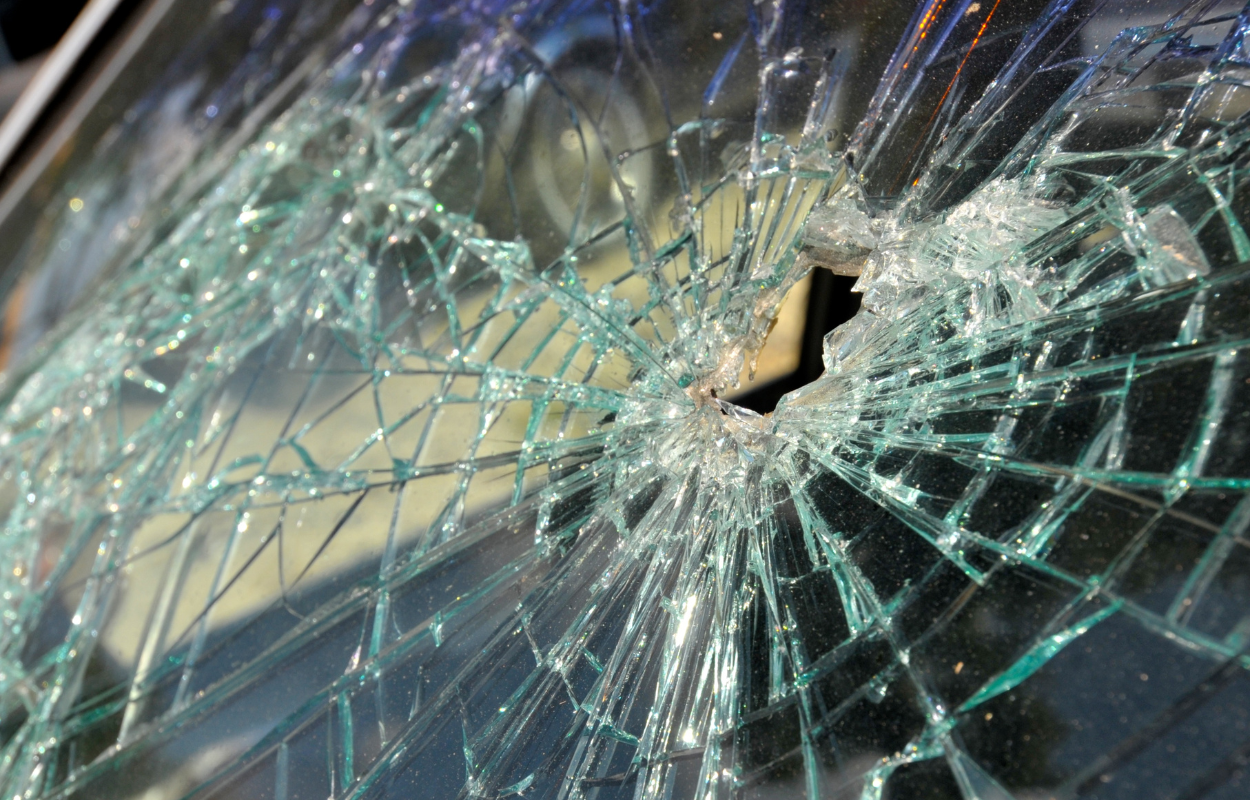Falling Barrier Pin Impales Vehicle

Robert T. Lynch, P.E., Principal Collision Reconstruction Engineer
Case Summary: The barrier pin was a steel rod 1-inch in diameter, 16 inches long, and weighed 3.5 pounds. It was being used to secure a temporary barrier to the bridge, which was closed to traffic for construction. As the pin was being driven into the deck of a bridge, it went through the surface and landed on a car passing beneath the bridge.
Fortunately, the pin landed on the unoccupied front passenger seat after it pierced the vehicle’s windshield. While the driver had sustained some cuts and scrapes due to glass fragments from the shattered windshield, he also claimed that the incident was a high severity collision and reported injuries which would be more consistent with a forceful impact. DJS was retained to determine the physics of the falling barrier pin and, specifically, what accelerations the vehicle experienced due to the impact.
Analysis: Gravity causes objects to fall to the ground in a predetermined manner. Utilizing the known fall height, or the distance between the bridge deck to the height on the vehicle where the pin pierced the windshield, the pin’s speed upon impact was identified. The speed calculation was subsequently applied to determine the falling pin’s impact momentum. Similarly, the weight of the vehicle along with its speed as it passed beneath the bridge established its impact momentum.
The momentum of the 3.5-pound pin was such an inconsequential percentage of the momentum of the 4,000-pound vehicle, that the pin’s impact would have barely affected the vehicle. The impact of the pin piercing the windshield would have been no worse than a vehicle traveling over a pothole in the roadway.
The calculations were then provided to the biomechanical engineer, who opined that the driver’s claimed injuries, aside from the superficial cuts and scrapes from the windshield glass fragments, could not have occurred during the subject incident.
Result: The case settled shortly after the expert reports were submitted.
Categories: Collision Reconstruction | Principal Collision Reconstruction Engineer | Robert T. Lynch, P.E.Tags: Barrier Pin | Bridge | Impact Momentum | Severity Analysis | Speed Calculations


